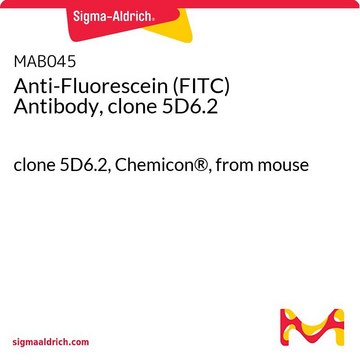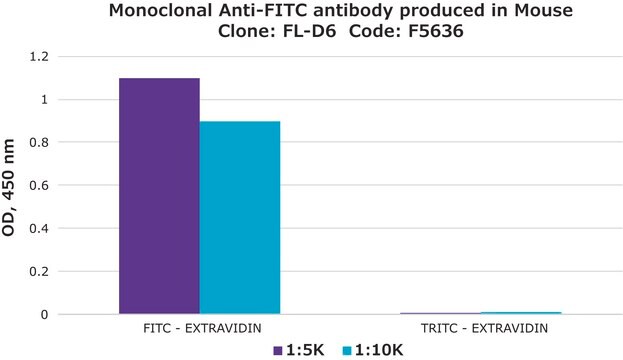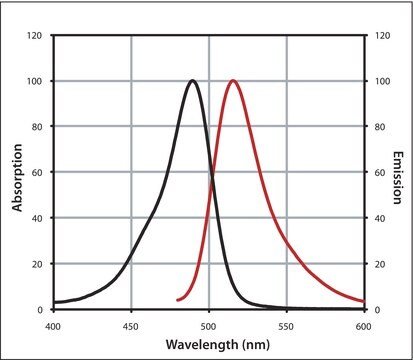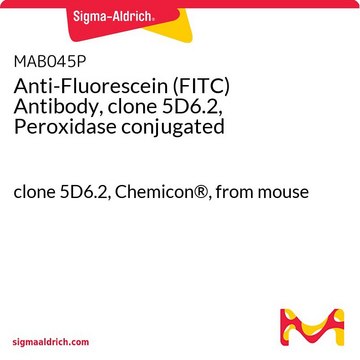Wichtige Dokumente
SAB4200738
Anti-FITC antibody, Mouse monoclonal
clone FL-D6, purified from hybridoma cell culture
Synonym(e):
Anti-Fluorescein isothiocyanate
About This Item
Empfohlene Produkte
Biologische Quelle
mouse
Qualitätsniveau
Antikörperform
purified from hybridoma cell culture
Antikörper-Produkttyp
primary antibodies
Klon
FL-D6, monoclonal
Form
buffered aqueous solution
Konzentration
~1.0 mg/mL
Methode(n)
immunoblotting: 1.25-2.5 μg/mL using ExtrAvidin-FITC
immunohistochemistry: suitable
indirect ELISA: 0.15-0.3 μg/mL using 5 μg/ml ExtrAvidin-FITC
Isotyp
IgG1
Versandbedingung
dry ice
Lagertemp.
−20°C
Posttranslationale Modifikation Target
unmodified
Allgemeine Beschreibung
FITC (fluorescein isothiocyanate) is a fluorochrome dye that absorbs ultraviolet or blue light (with peak wavelength of approximately 495 nm) causing molecules to become excited and emit a visible yellow-green light (with peak wavelength of approximately 519 nm).
Spezifität
Immunogen
Anwendung
- immunoblotting
- enzyme-linked immunosorbent assay (ELISA)
- immunohistochemistry
Biochem./physiol. Wirkung
Physikalische Form
Lagerung und Haltbarkeit
Haftungsausschluss
Sie haben nicht das passende Produkt gefunden?
Probieren Sie unser Produkt-Auswahlhilfe. aus.
Lagerklassenschlüssel
10 - Combustible liquids
Flammpunkt (°F)
Not applicable
Flammpunkt (°C)
Not applicable
Hier finden Sie alle aktuellen Versionen:
Analysenzertifikate (COA)
Die passende Version wird nicht angezeigt?
Wenn Sie eine bestimmte Version benötigen, können Sie anhand der Lot- oder Chargennummer nach einem spezifischen Zertifikat suchen.
Besitzen Sie dieses Produkt bereits?
In der Dokumentenbibliothek finden Sie die Dokumentation zu den Produkten, die Sie kürzlich erworben haben.
Unser Team von Wissenschaftlern verfügt über Erfahrung in allen Forschungsbereichen einschließlich Life Science, Materialwissenschaften, chemischer Synthese, Chromatographie, Analytik und vielen mehr..
Setzen Sie sich mit dem technischen Dienst in Verbindung.








